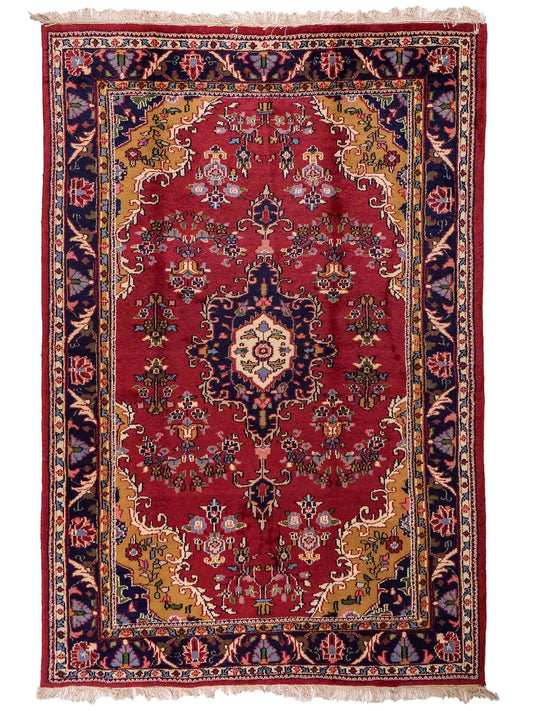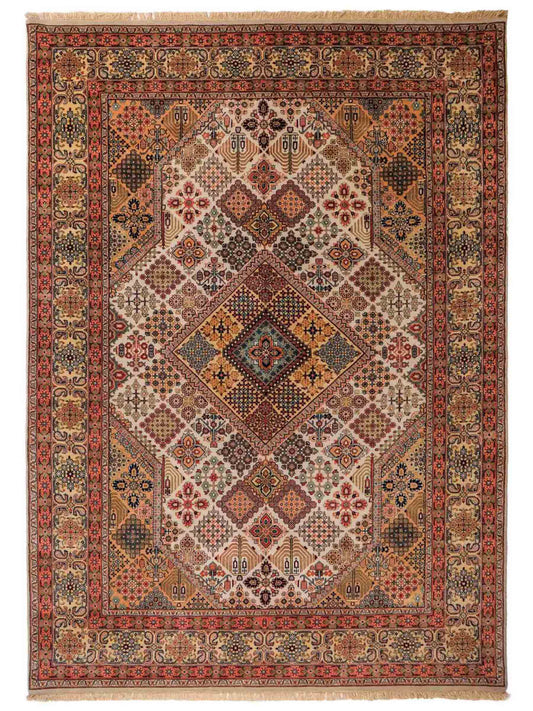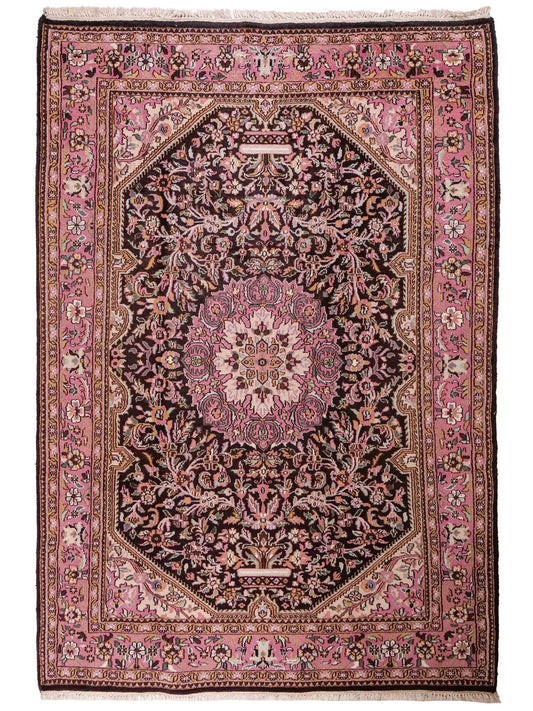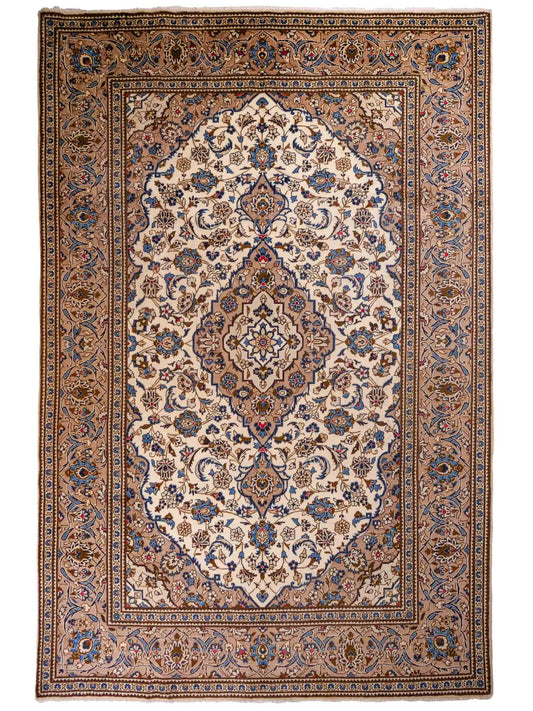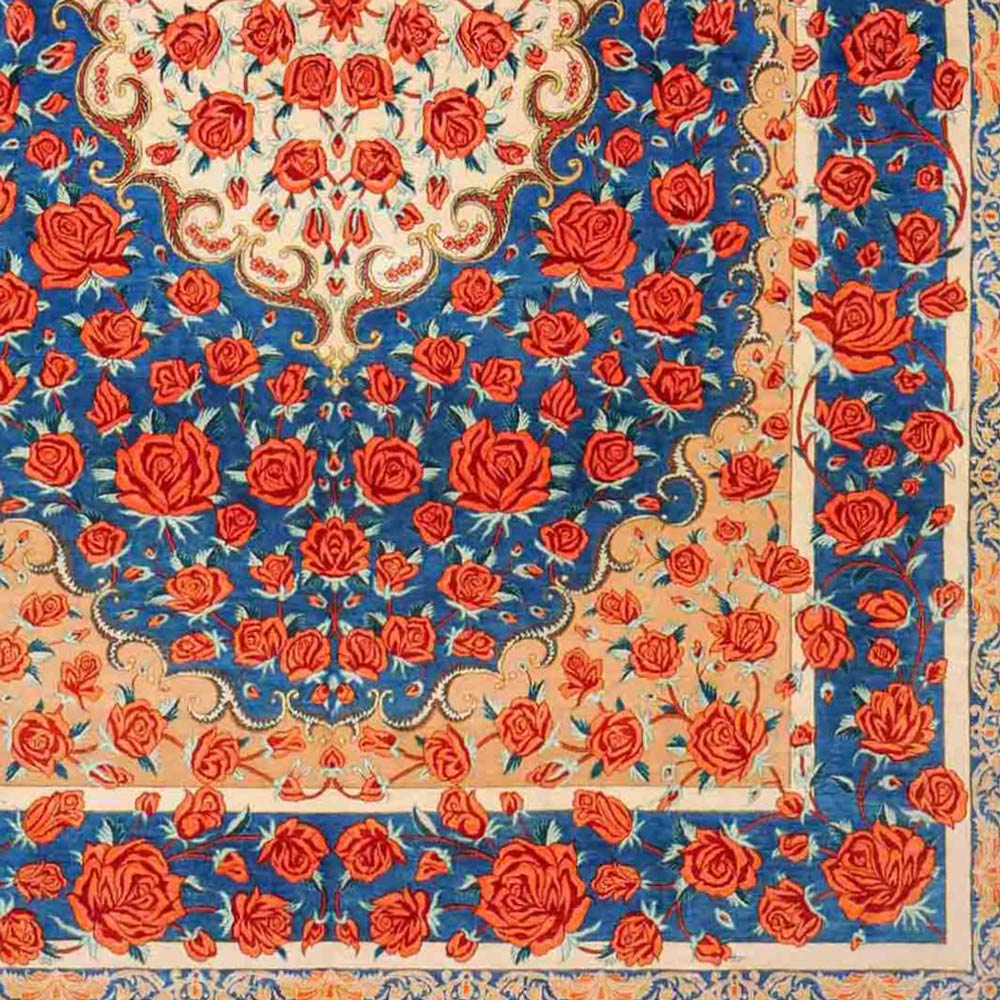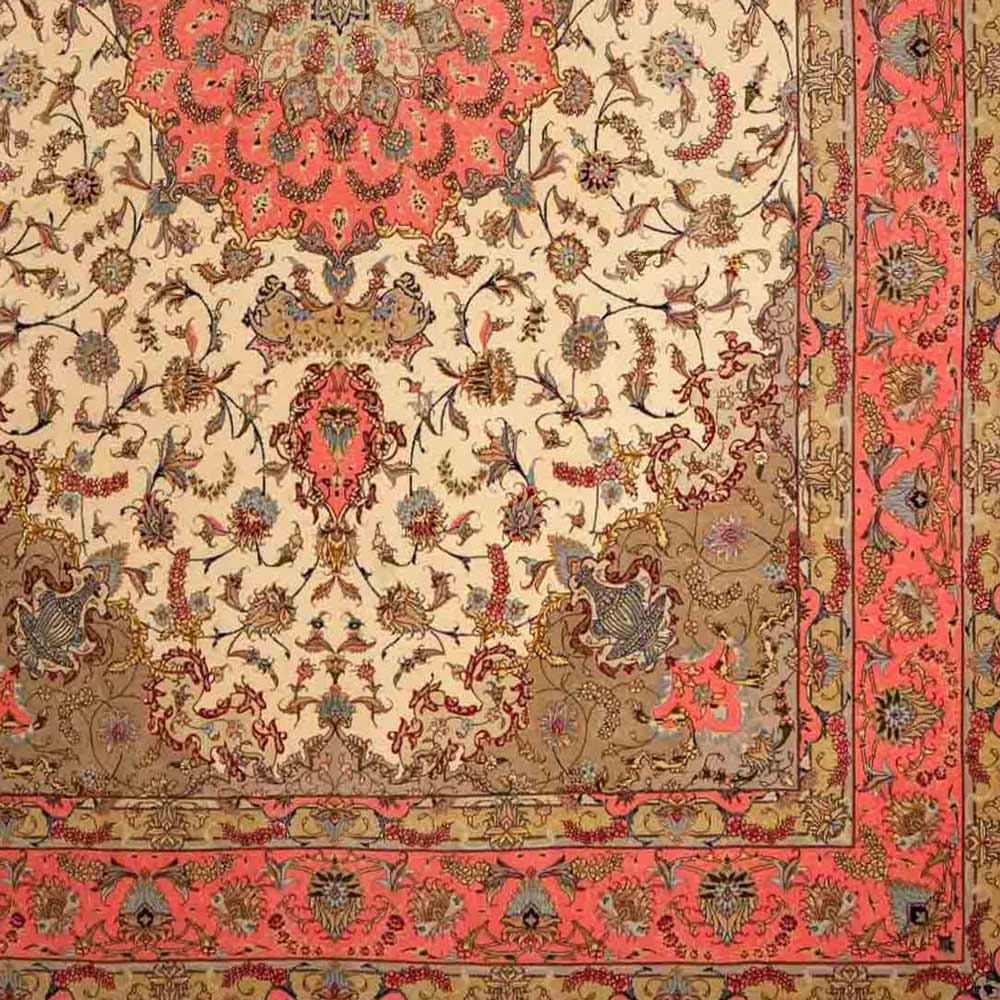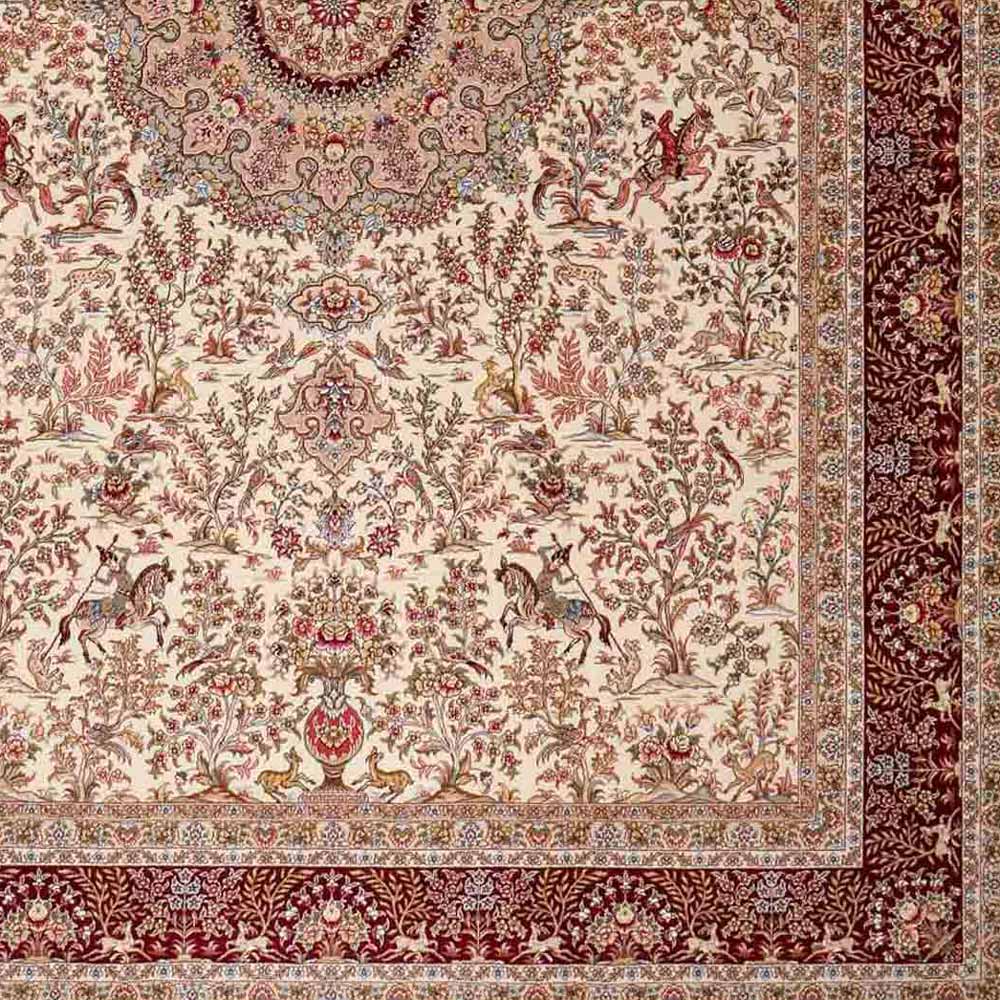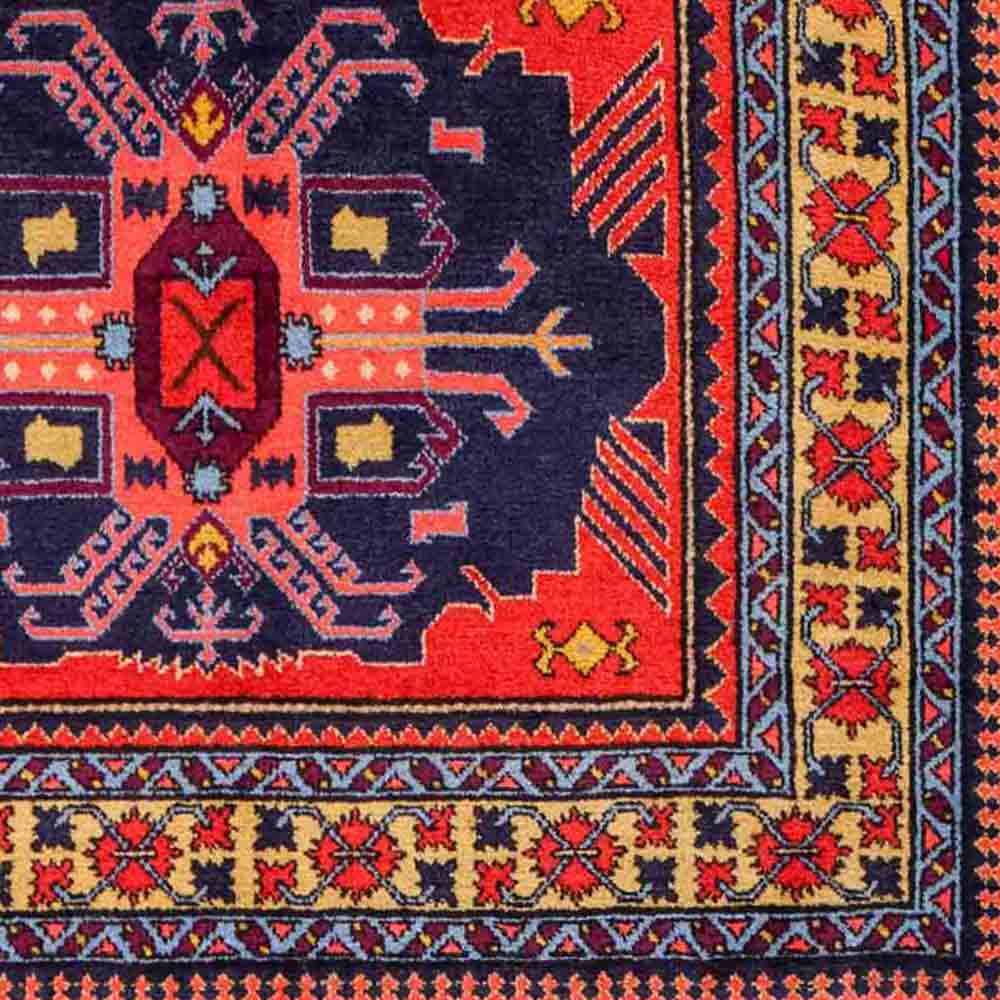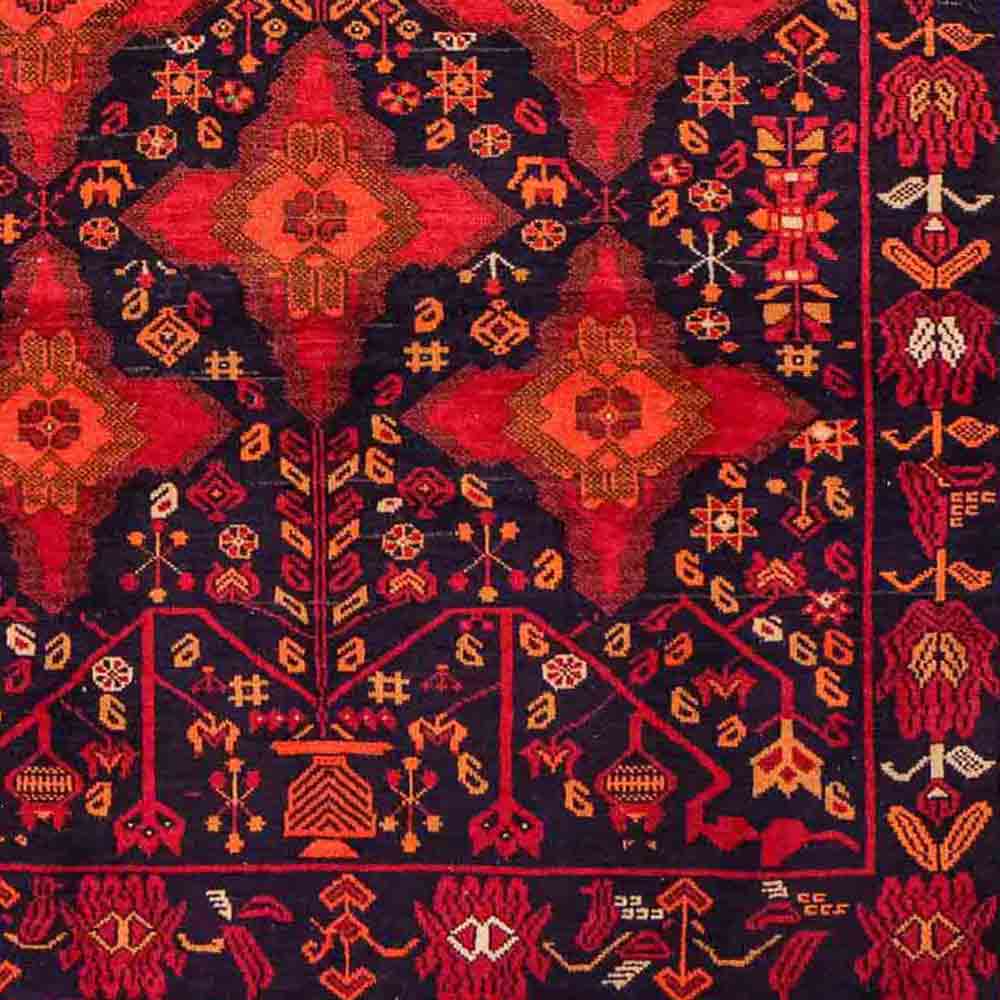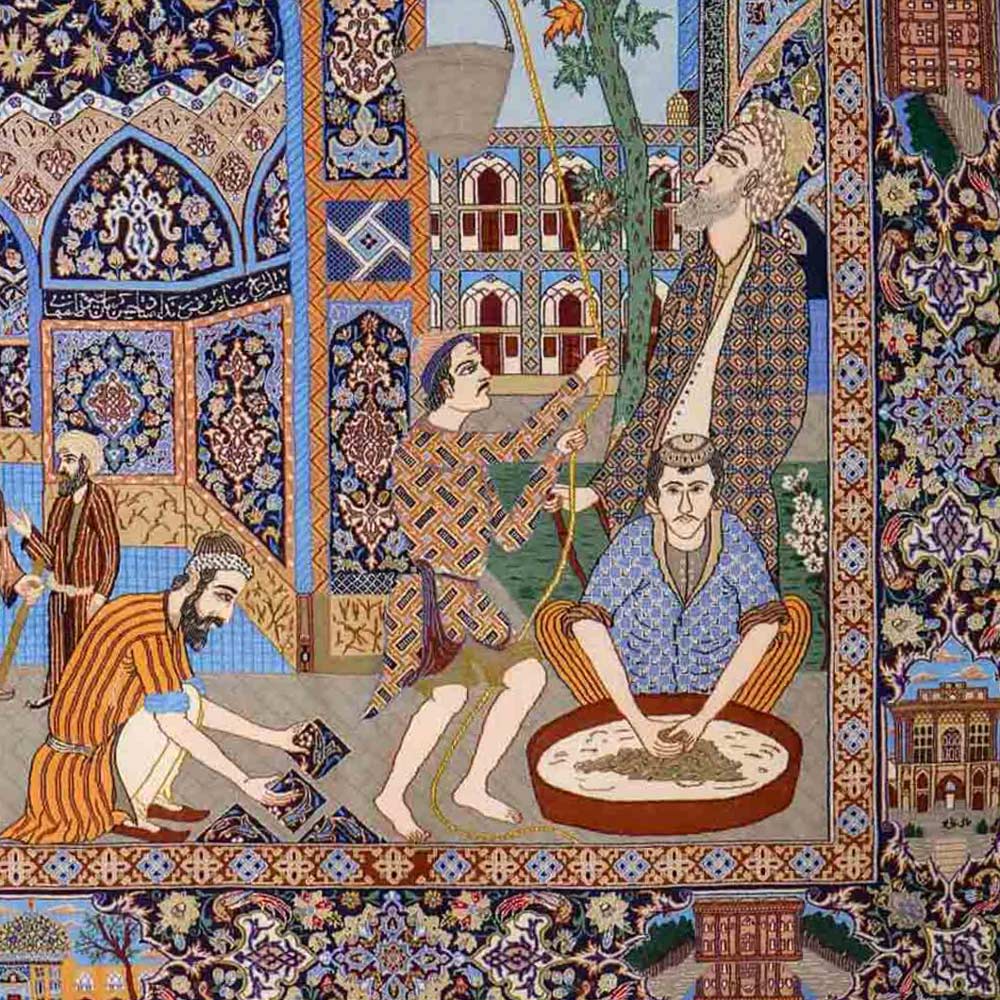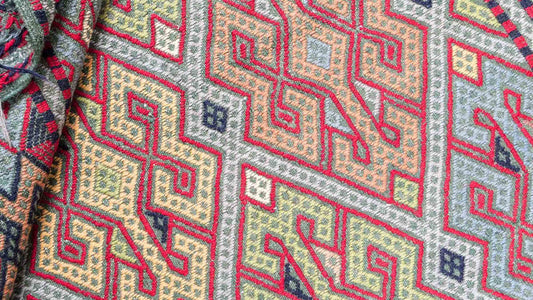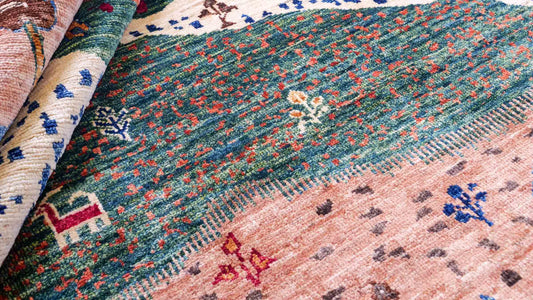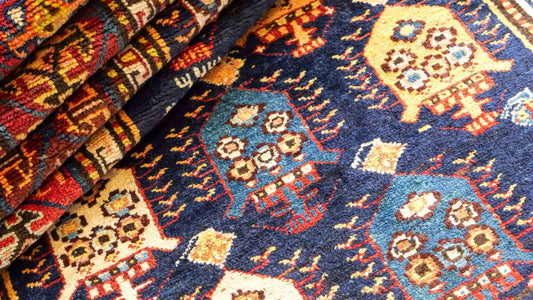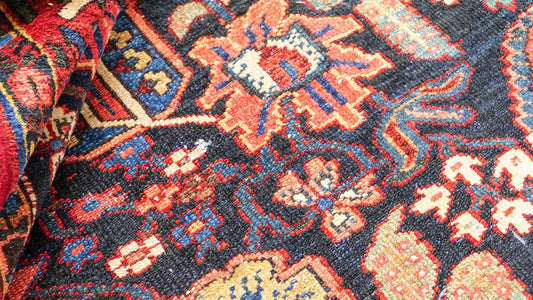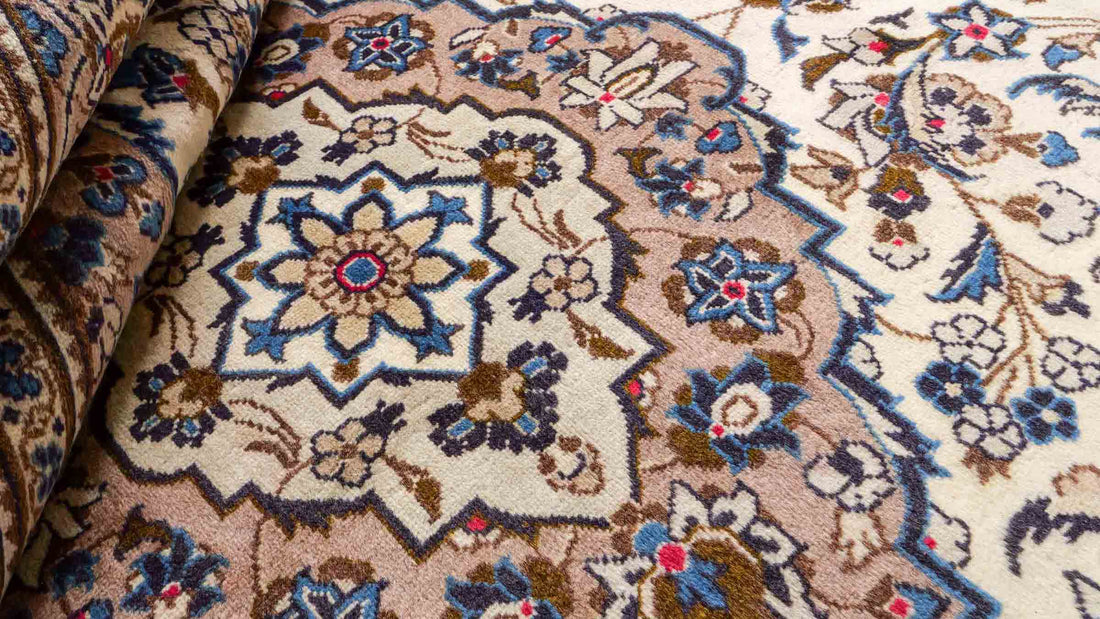
Kashan
Daniel KhademiDiscover the fascinating world of Kashan rugs—masterpieces of Persian artistry, renowned for their exquisite quality, vivid colors, and rich traditional patterns. Explore everything about their origin, history, craftsmanship, designs, and why Kashan rugs are so valued as investments and cultural treasures.
Kashan Rugs: Key Facts at a Glance
- Origin: Kashan (Keshan), Isfahan Province (Central Iran); world-famous center of Persian rug artistry
- Material: Premium sheep’s wool or silk, pure or blended yarns; hand-dyed with natural colors
- Knot Density: 120,000 – 600,000 knots/m² (fine, detailed, durable)
- Designs & Patterns: Floral motifs, medallions, vines, palmettes, geometric elements
- Colors: Vibrant red, dark blue, beige, green, plant-based natural dyes
- Special Features: Harmonious composition, symbolic designs, exceptional value stability
- Use: Classic & modern interiors, sought after as collector’s items & for investment
Explore our curated collection of exclusive Kashan Rugs & Designs —find your one-of-a-kind masterpiece today!
Geography & Origins of Kashan Rugs
Kashan as the Cradle of Persian Tradition
The city of Kashan is located in the historic province of Khorasan in northeastern Iran. This province is famous for its spectacular landscapes, from stunning mountain ranges to fertile valleys, and for its rich cultural and artisanal heritage. The geography of this region plays a crucial role in the creation of Kashan rugs.
The climate in Khorasan is mostly mild to continental, making it ideal for sheep farming. The wool used for rug making typically comes from local flocks grazing on lush pastures, known for its excellent quality, thickness, and durability. This is a key factor in the longevity and value of the rugs.
In addition to wool, the region abounds in natural dyes obtained from plants and minerals. These dyes allow weavers to produce lively, lasting colors that distinguish Kashans from other rugs. The use of traditional dyeing techniques ensures that the colors remain bright for years.
Kashan’s location near historically significant trade routes has also contributed to the cultural diversity of the region. In the past, Kashan was a major hub for East-West trade. These influences are reflected in rug designs featuring both Persian and Islamic artistic traditions. The diversity of styles and patterns proves the region’s openness and centuries of cultural exchange.
Kashan’s geography has influenced not only raw material availability, but also the artisan traditions that continue in the city today. The rug makers, often family businesses, preserve their knowledge and techniques across generations, helping make Kashan rugs valued not just as artworks, but as pillars of regional culture.
History & Importance of Kashan Rugs
A World-Class Legacy
The origins of Kashan rugs go back to the 16th century, during the peak of the Safavid dynasty, renowned for its cultural achievements. Art and crafts were greatly promoted at that time, allowing Kashan weavers to create exquisite pieces meeting the highest standards.
Kashan rugs quickly became famous and were valued for their quality and beauty. With their complex designs and rich palette, they became coveted pieces in high society, often found in palaces and wealthy households—not only as floor coverings but as symbols of prestige and craftsmanship.
Production methods and patterns have developed over the centuries, but the core of the traditional rug-weaving art remains preserved. As a result, Kashan rugs have continued to be status symbols in later eras.
Social and Economic Significance
Kashans are not just items of function and beauty but also a vital economic sector supporting numerous families and contributing to the local economy.
The rug makers, often women, are mainly responsible for producing these high-quality rugs and play a central role in preserving cultural identity and traditional craftsmanship. This profession not only offers jobs, but also strengthens community identity. Many of these women are part of craft initiatives that allow them direct market access for better prices.
Rug weaving is highly respected in society as an art form worth preserving. The production of Kashan rugs is deeply connected with family traditions, with knowledge passed down generations, strengthening community ties and fostering awareness of cultural roots.
The economic significance of Kashan rugs goes far beyond the region. These rugs fetch high prices and are internationally renowned. Export activity bolsters the local economy and increases tourism, as many visitors seek authentic Kashan rugs.
Kashan Rug Manufacturing Process
Hand-knotted Perfection: Step by Step
The entire process can take several months and involves multiple carefully executed steps, each playing a crucial role in the final quality.
- Wool Preparation: The first step is selecting and thoroughly cleaning the wool, sourced from sheep or goats, then removing impurities, dyeing, and spinning it into yarn. Dyeing uses either natural dyes (from plants, minerals, or insects) or synthetic dyes. The dye choice affects not only the color quality but also the environmental impact of the final product.
- Knotting Technique: After yarn preparation, the weaving begins. Kashan rugs usually use the Persian knotting technique, enabling a high knot density—from about 120,000 to 600,000 knots per square meter. The knot density is essential for the rug’s quality; the denser the knots, the finer and more durable the pattern.
- Patterns and Designs: The patterns and designs of Kashan rugs are often complex and reflect regional traditions. Frequently, floral motifs, geometric forms, or meditative symbols are featured. The region’s culture and history shapes every rug, so each one tells a unique story.
- Finishing: After knotting, the rug is carefully checked. Loose fibers are trimmed, and the rug is washed to set colors and enhance appearance. The finishing touches include fringing and a detailed inspection for flaws.
- Quality Control: Each rug undergoes a thorough quality control check. Artisans examine each rug for defects, unevenness, and color discrepancies. Only the finest rugs are released for sale in galleries, shops, or on international markets.
Patterns, Designs & Colors of Kashan Rugs
Classic Motifs
The designs of Kashan rugs are defined by their floral and geometric motifs, often executed with impressive attention to detail. Frequent elements include central medallions, which serve as focal points, and elaborate vines that elegantly express the stories and traditions of the region. These motifs are visually pleasing and often hold deeper symbolic meanings, drawn from Persian mythology, religion, and nature.
As a tribute to nature, floral motifs symbolize universal themes of life and growth. The patterns often include stylized plants, flowers, and trees, representing the beauty and abundance of the surroundings. These intricate designs honor the region’s culture and tradition, with each rug telling its own story and regarded as a piece of cultural heritage.
Traditional Colors
Kashan rugs are known not just for their classic patterns, but also for their harmonious color palette. The main colors are deep reds, gentle blues, earthy beiges, and subtle greens. Traditionally, these colors are derived from natural dyes, making the rugs both eco-friendly and uniquely vibrant.
Each color carries a particular meaning and reflects cultural values and emotions: Deep reds often represent passion and strength, blues symbolize tranquility and harmony, earthy beige stands for stability, and green suggests growth and renewal.
Using natural dyes ensures lasting, vibrant hues and allows the harmonious color combination to shine—crucial for the rug’s aesthetics and for creating a warm, inviting ambiance. The colors are carefully chosen for a sense of balance and beauty.
Design Classics Compared: Bijar, Sarouk, Kashan & Mashhad Rugs
| Feature | Bijar | Sarouk | Kashan | Mashhad |
| Origin | Northwest Iran, Kurdistan | Northwest Iran, Markazi | Central Iran, Isfahan |
Northeast Iran, Khorasan |
| Material | High-quality sheep wool | High-quality sheep wool | High-quality sheep wool, rarely silk | High-quality sheep wool |
| Knot density | 250,000 – 600,000 knots/m² | 160,000 – 400,000 knots/m² | 120,000 – 600,000 knots/m² | 200,000 – 500,000 knots/m² |
| Design | Geometric, floral, medallion | Geometric, floral, medallion | Geometric, floral, medallion | Geometric, floral, medallion |
| Colors | Reds, blues, earth tones | Reds, blues, earth tones | Reds, blues, earth tones, greens | Reds, blues, earth tones, greens, golds |
| Special features | Very hard-wearing, dense knots, strong colors | Vibrant colors, geometric & floral motifs | Natural dyes, classic, durable | High-quality wool, diverse designs |
| Value/Price range | Premium segment, highly value-stable | Premium segment, highly value-stable | Premium segment, highly value-stable | Mid to premium segment |
Checklist: How to Identify an Authentic Kashan Rug
- Premium, lustrous sheep’s wool or silk? ✔
- Natural dyes, no chemical odors? ✔
- Very high knot density (>120,000 knots/m²)? ✔
- Typical medallion and rich floral motifs? ✔
- Pattern clearly visible on reverse side, accurate fringes? ✔
- Firm yet supple texture? ✔
- Certificate/proof of origin included? ✔
Styling Tips: Showcasing Kashan Rugs in Your Home
Here are some ideas to decorate your space with a Kashan rug:
- As a Focal Piece: Place your Kashan rug in the center of your living space for dramatic impact. In a classic living room, a large Kashan—emphasizing red and blue—can frame both sofa and chairs for a cozy, inviting look.
- Boho-Chic Style: Kashan rugs suit Bohemian interiors, beautifully paired with artwork, colorful pillows, and natural materials. Their bold colors and geometric designs enhance the free-spirited feel.
- Modern Elegance: In minimal, modern settings, a Kashan rug in gentle tones offers warm contrast. Use it with clean-lined, neutral furniture for an inviting accent that does not overpower the simplicity.
- Rustic Flair: For a rustic or country house look, pair Kashan rugs with wood surfaces, natural materials, and vintage pieces. Choose earthy-toned rugs for a warm, organic ambiance.
- Traditional Touch: In traditional or orientally inspired rooms, hang a Kashan rug on the wall or place it under a dining table or by the fireplace for a statement of craft and history. Pair with antique furniture or heavy textiles to enhance the classic effect.
Care & Longevity: Preserving Your Kashan Rug
How to Keep Your Kashan Rug Beautiful for Years:
- Vacuum regularly, but do not beat
- Treat stains immediately with lukewarm water & a cloth
- Avoid direct sunlight
- Professional cleaning recommended every 1–2 years
- Find more care tips in our blog post: *How to Care for Hand-Knotted Rugs*
Kashan Rugs: Collector’s Items & Investment Potential
By purchasing a Kashan rug, you are investing not only in a beautiful work of art but also in valuable craftsmanship of deeper worth and historical significance.
- Appreciation: Especially high-quality Kashan have the potential to increase in value over time. This stems from various factors, including knotting technique, material selection, and design rarity. Like many works of art, well-preserved antique Sarouks become sought-after collectibles, commanding significant appreciation on the market and making them attractive as investment assets.
- Collector’s Items: Kashans are excellent for collectors due to their variety of styles, designs, and sizes. A carefully chosen Kashan rug not only tells a story but also becomes a treasured heirloom to be passed down through generations.
The market for handmade rugs is steadily growing, as more people recognize the uniqueness and emotional value of craftsmanship. Kashan rugs unite art, history, and functionality in a unique way. They are not just an asset for any home, but also a valuable item that tells stories and can endure for generations. In a world increasingly dominated by mass production, individually crafted works of art are becoming ever more significant and valuable.
► For detailed tips & in-depth guidance, see our blog post: *Are Hand-Knotted Rugs a Good Investment?*
Request a personal style & purchase consultation for Kashan rugs now!
FAQ – The Most Important Questions About Kashan Rugs
What makes an authentic Kashan rug?
► Finest sheep’s wool/silk, high knot density, central medallion with floral motifs, crisp details.
Are Kashan rugs easy to care for and suitable for families?
► Yes! Durable materials and skilled craftsmanship keep them beautiful for decades—just follow care tips!
How do I properly care for a Kashan rug?
► Vacuum carefully, do not use aggressive – especially not chemical – agents, and avoid direct sunlight. Regular professional cleaning will maintain their beauty and value. More in our blog post: *How to Care for Hand-Knotted Rugs*
How do I recognize a valuable Kashan rug?
► Age, condition, knot density, pattern, provenance, and certificate—seek expert advice!
Are Kashan rugs a good investment?
Very fine and/or antique Kashan rugs with distinctive patterns are stable-value collector and connoisseur pieces. Read more in our blog post: *Are Hand-Knotted Rugs a Good Investment?*
Where can I buy high-quality Kashan rugs?
► Only from specialist dealers and reputable online shops—always check for certificates of authenticity and expert advice. At JUPITER Intl, every hand-knotted, hand-tufted, and handwoven rug comes with a Certificate of Authenticity.
Conclusion: Persian Rug Culture at Its Finest
With a Kashan rug, you acquire a genuine piece of Persian history, magnificent craftsmanship and a timeless treasure that inspires across generations. Find your unique original with JUPITER Intl!
Explore our curated collection of exclusive Kashan Rugs & Designs —find your one-of-a-kind masterpiece today!
Related blogs & blog posts you might also be interested in:
→ Design Classics, Countries of Origin, Carpet Materials, Carpet Guide

